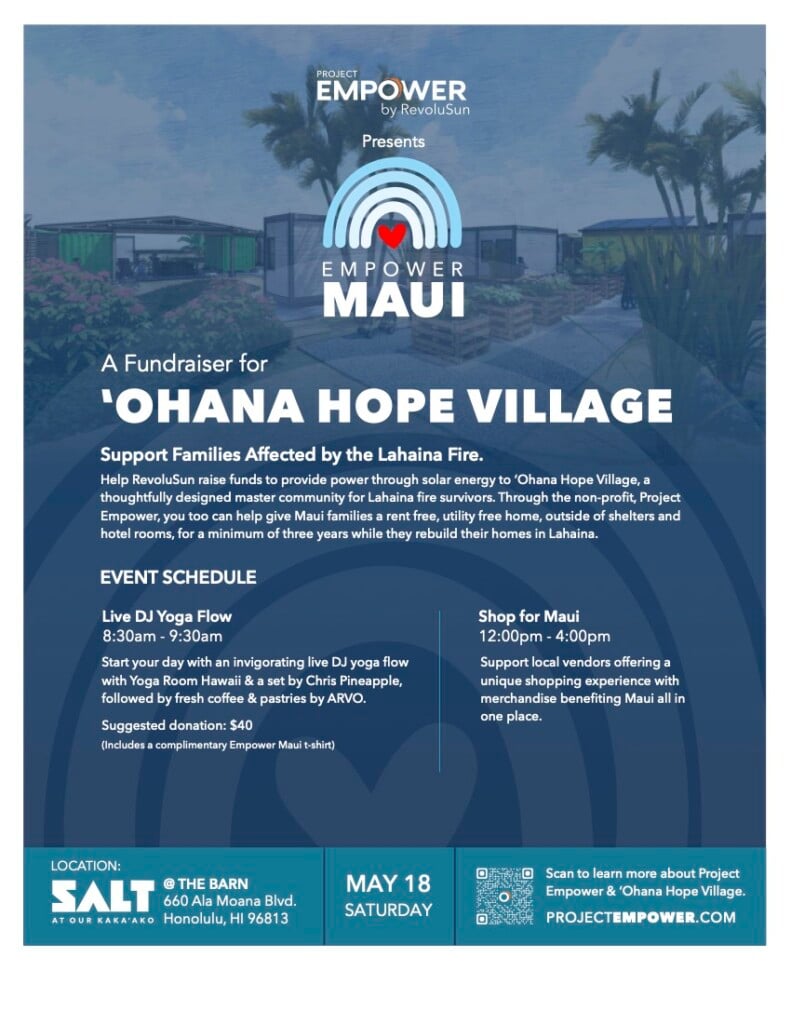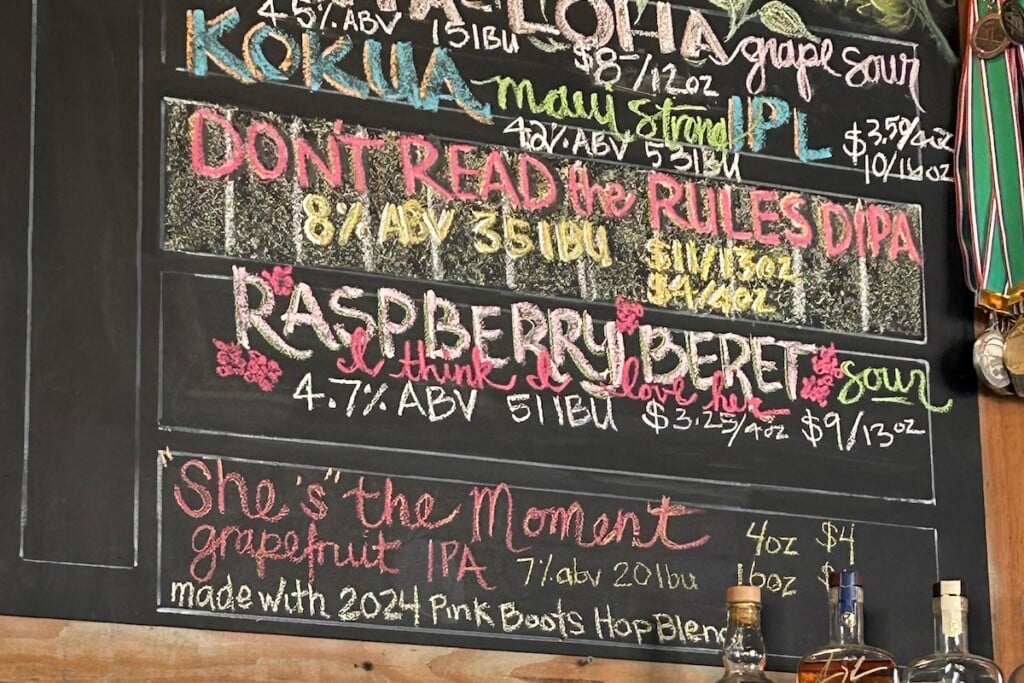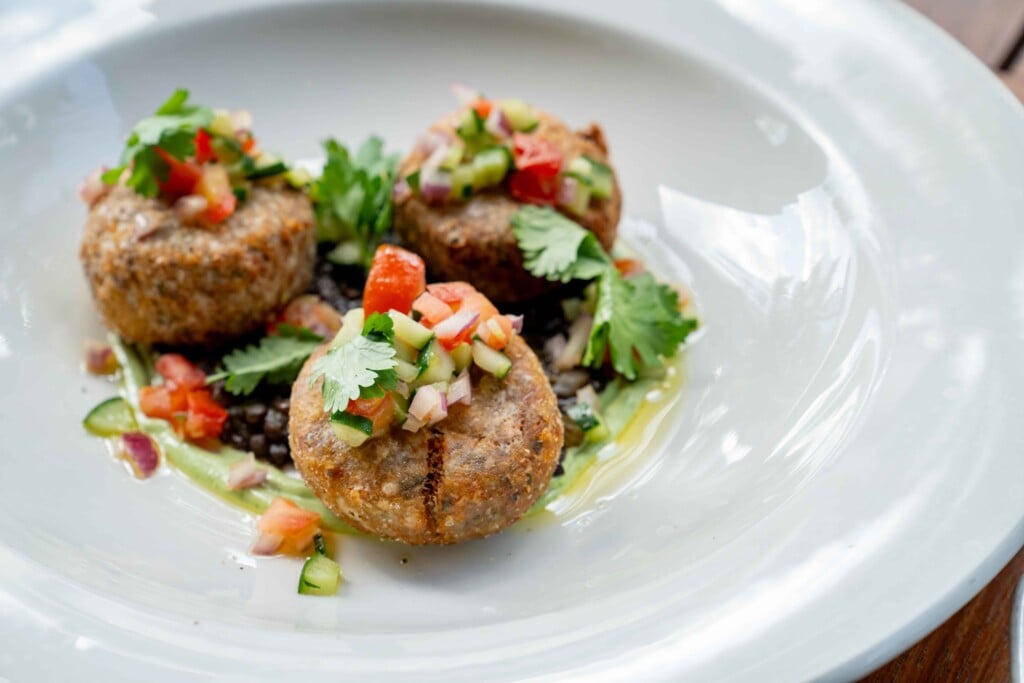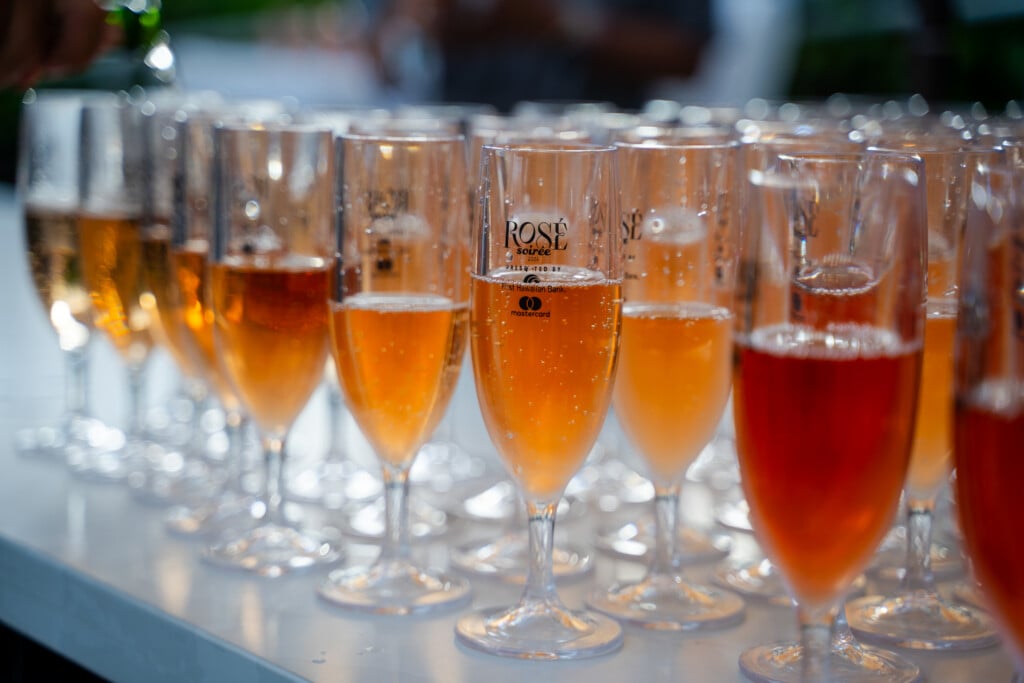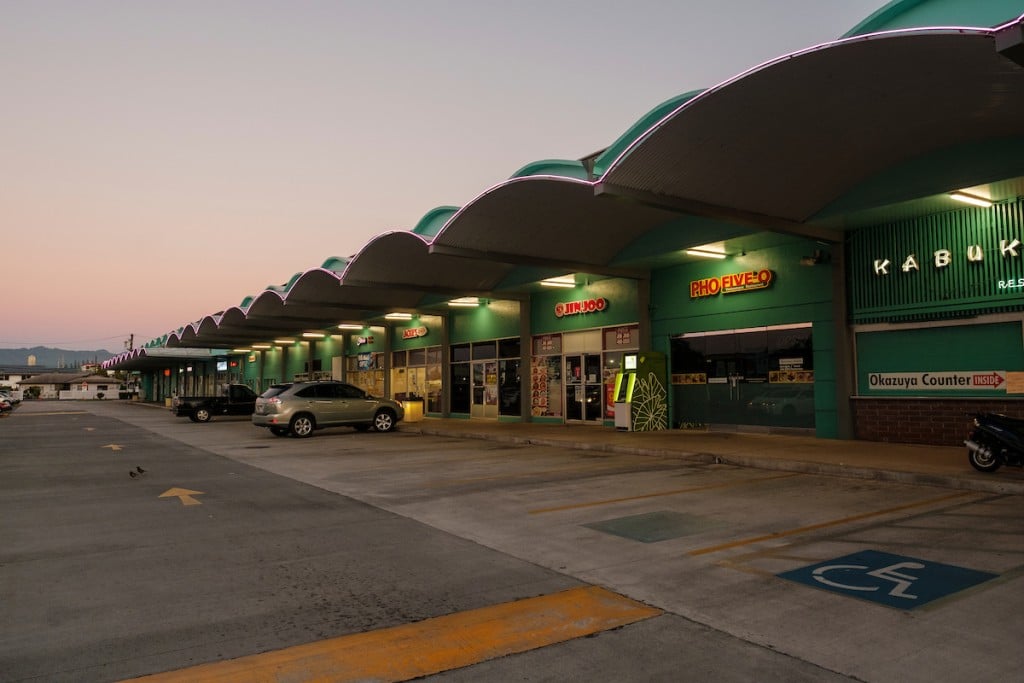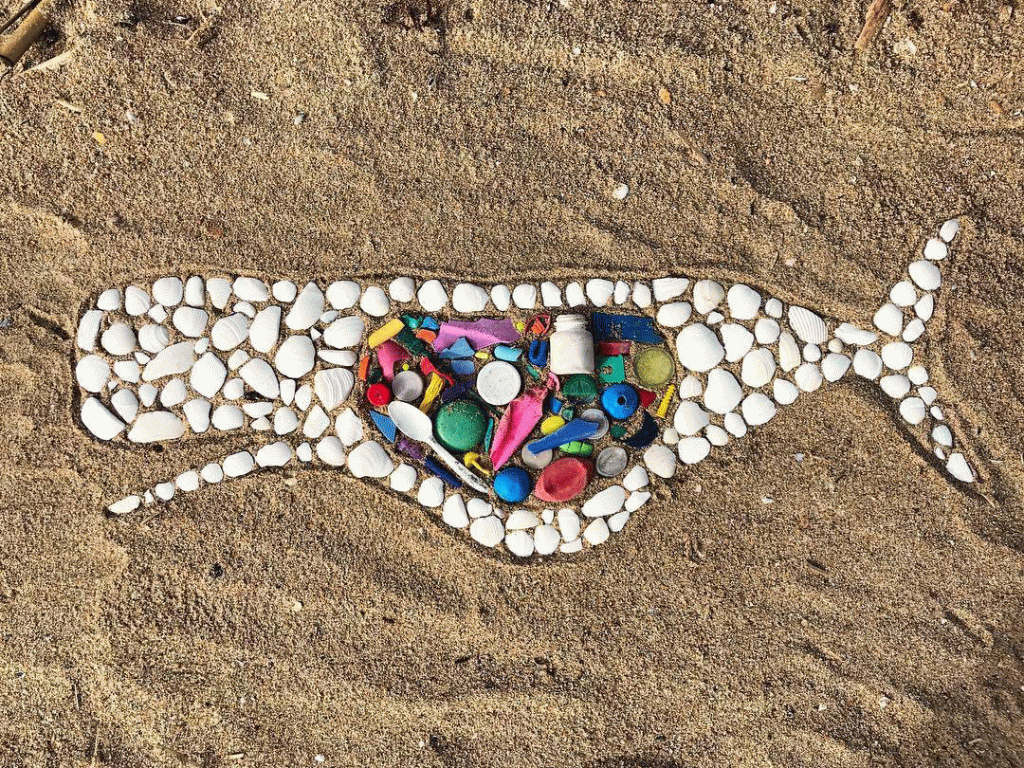HONOLULU Magazine’s Hale ‘Aina Awards
are the most prized dining awards in the Islands. Debuting in 1984, they were
the first awards to recognize local tastes-rather than those of Mainland magazines.
Hale ‘Aina means “eating place.” It is the closest Hawaiian equivalent
to the word restaurant. The awards guide readers to the best places to eat, bolster
restaurants’ reputations, and have been publicized all over the Mainland and Japan
as the definitive measure of fine dining in the Islands. In addition, the awards
have generated their own nonprofit organization, the Hale ‘Aina ‘Ohana, part of
the University of Hawai’i Foundation. To maintain the integrity of the awards,
only HONOLULU Magazine subscribers can vote for the awards, with the ballot included
in HONOLULU’s annual August Restaurant Guide. An independent research firm tallies
the ballots, and the magazine gives Hale ‘Aina Awards to our readers’ favorite
restaurants. So thank you-for sharing your knowledge with us, for your
enthusiasm for Hawai’i’s restaurant scene and for your willingness to make your
views known. Restaurant of the Year Alan
Wong’s Restaurant Sure, he’s been honored by the national press (Wine
Spectator and Gourmet magazines), and yes, he took home a James Beard Award for
Best Chef: Pacific Northwest, but Alan Wong doesn’t take Islanders for granted.
“The local people have been our market from year one,” Wong says. “It’s special
to win a Hale ‘Aina, because the people who vote are from Hawai’i.” This
is his sixth Hale ‘Aina win since starting his King Street restaurant in April
1995. In 1996, his first year of eligibility, he scored Hale ‘Ainas for “Best
New Restaurant” and “Restaurant of the Year.” He again won “Restaurant of the
Year” in 1997, 1999 and 2000, before taking home the honors again this year. Wong
is clearly not resting on his laurels. “I put pressure on myself and all my cooks
and chefs, too, to always evolve,” he says. And he has to. These days, restaurant-goers
are food-savvy, more demanding. “People are traveling more,” explains Wong.
“They are experiencing many different kinds of tastes, flavors and cuisines. Everyone’s
palates are becoming more sophisticated, more worldly. Their expectations are
higher.” For example, 30 years ago, most people weren’t even drinking red wine.
A chef certainly didn’t have vintners whipping up special “Pinot Pinot” blends
to match his cuisine, as Wong does today. To keep his menu fresh, Wong
says he forages for ideas-and ingredients-throughout the state. “We’ve
been doing a lot with beef,” he says. “Using some from the Maui Cattle Co., some
Big Island beef and some of Doc Lum’s North Shore beef. We have a coffee program,
where we sell a coffee from each island, and it was only natural that we do the
same with beef. It’s like a tour of Hawai’i, through beef.” Other Hawai’i-grown
ingredients include Hamakua mushrooms, hearts of palm, Meyer lemons, Key limes,
nutmeg and mace (the covering of the nutmeg). “Oh, and goat cheese,” Wong continues.
“I love the goat cheese. And fresh wasabi, which has been hard to find. French
melons…. ” Wong’s passion for ingredients serves him well, but he’s also
a skilled craftsman. He schooled at Kapi’olani Community College and apprenticed
at The Greenbriar Hotel. He also cooked under André Soltner at Lutèce in New York
City. Born in Japan to a Japanese mother and a Chinese-Hawaiian father, he moves,
like many Islanders, with ease among the nuance and flavors of many cultures. Wong
has recently gained buzz with his vegetarian tasting menus. With dishes like an
elegant eggplant tian, diners are too busy enjoying the food to notice how healthful
it is. Wong stays busy with his many locations, including The Pineapple
Room at Ala Moana Center and the Alan Wong’s Restaurant in Japan. In December
2003, Wong opened The Hualälai Grille by Alan Wong at the Four Seasons Resort
Hualälai, on the Big Island. On a recent night, we returned to the scene
of Wong’s Hale ‘Aina wins-the King Street restaurant. We sat down to a classic
Alan Wong appetizer, the Soup and Sandwich, a chilled red and yellow tomato soup
served with a tiny grilled cheese sandwich, made decidedly un-grade-school with
the addition of foie gras and kälua pig. The “Poki-Pines” takes a classic Island
staple and wraps it in won ton pi, turning ‘ahi poke into a salty, crunchy chrysanthemum.
The hits keep coming: The Ginger-Crusted Onaga entrée that isn’t afraid to taste
like ginger. A fluffy pumpkin cheesecake. Even the dinner rolls are outrageous.
Alan Wong’s is the kind of place that so strives for excellence, the current Miss
Hawai’i, Oleana Rubin, is serving me rice. No wonder the place is packed, even
on a Sunday night at 8. Toward the end of our meal, I notice a customer
at the table next to me. He sits down, orders liberally from the menu and the
wine list, and then automatically reaches down to loosen his belt by one notch.
Guess he knew he was in for a memorable meal. Best New
Restaurant BluWater Grill “BluWater Grill
has become exactly what we wanted it to be: a neighborhood restaurant,” says Bill
Bruhl. Even for some residents, the restaurant can be hard to find, tucked at
the end of a row of storefronts in the Hawai’i Kai Shopping Center. “I’ve found
the best thing to say is that it’s behind Longs,” says Bruhl. Still, enough
customers have found the East Honolulu eatery to make it a Hale ‘Aina pick for
Best New Restaurant. Bruhl and partner Tanya Phillips, after 10 years at Ryan’s,
were approached by a pair of steady customers to open their own restaurant. Despite
three small children, Bruhl quit his job and took the plunge. In a relatively
rapid eight months, the partners refurbished the old Portlock location on the
Hawai’i Kai waterfront, opening the Grill’s doors in March 2004. BluWater
is hardly Ryan’s East; it’s more intimate and upscale. But, like Ryan’s, it offers
a remarkable range of foods and price points, from an $8.95 cheeseburger with
fries to a $29.95 whole crispy moi in a garlic and ginger panko. There are also
eight to 10 items on an ever-changing menu of specials. Our top choice? The mango-and
guava-glazed pork ribs with spicy Jamaican slaw. The Cheesecake
Factory “We knew Hawai’i was about tradition. When we came here, we
wanted to do everything correctly, from the blessing at the groundbreaking to
having a local charity as the beneficiary of our opening party,” says Howard Gordon,
senior vice president for marketing for The Cheesecake Factory. It is perhaps
no surprise that The Cheesecake Factory in the Royal Hawaiian Shopping Center
was a success from its opening in mid-December 2003. The restaurant chain has
put together an enviable record, with its 87 outlets doing an average of $11 million
in yearly sales, in a field where a $2-million or $3-million year is considered
a success. But what may be remarkable is that, in first year, the Waikïkï Cheesecake
Factory became the company’s hottest restaurant, doing $19 million. “It’s
one of the few Waikïkï restaurants where you see a lot of local people,” says
Gordon. “We made sure when we got a lease, we had two-hour validated parking,
because we knew the biggest barrier for local residents was having to pay to park.” Whether
it’s the parking or the cheesecake (see Best Dessert, page 45) or the 200-item,
reasonably priced menu, The Cheesecake Factory has attracted enough of a local
following that it, too, wins Best New Restaurant in this year’s Hale ‘Aina awards.
When William Bruhl of BluWater Grill heard he shared Best New honors with
Cheesecake Factory, he said, “That makes me proud. We’re really different restaurants,
but that’s an amazing operation.”
The Little
Restaurant You Love There are times when going out to dinner
is a big deal, and times when you prefer it not to be. You want someplace that’s
small, comfortable, close by, where the bill doesn’t require you to dip into your
401(k) plan. These are sometimes restaurants that are closest to our hearts. Olive
Tree Café It’s small, it’s crowded, it’s hard to get a table and, if
you do, there’s no table service. None of that seems to discourage the customers
at Savas Mojarrad’s Olive Tree Café, near Kähala Mall. They still flock there
for the reasonably priced marinated mussels, or the souvlaki made from grass-fed
New Zealand lamb, or fish bought directly from local fishermen. “I don’t
know how we do it,” says Mojarrad. “My crew is amazing, we’re open for five hours
a night and we serve 350 to 400 meals.” Those numbers are even more remarkable
because Mojarrad insists on all fresh ingredients, raised by sustainable methods.
The only can in the place is of San Marazano tomatoes from Italy. He even makes
the yogurt in his tzatziki sauce. This New Year’s Eve is the little restaurant’s
eighth anniversary. “I never thought I was going to stay that long,” says Mojarrad.
“Usually, I have a restaurant for about six years, then I go to Greece and stay
until I run out of money.” This time, however, Mojarrad says he feels stuck.
“I have staff, I have customers. One of my customers said if I felt like leaving,
he’d get up a petition to force me to stay.” That’s a restaurant people love. Le
Bistro When we asked for little restaurants people loved, we expected
small, often overlooked neighborhood places, not restaurants with fine-dining
reputations that could win regular Hale ‘Ainas. But Alan and Debbie Takasaki’s
Le Bistro managed to win both. Le Bistro manages to be both. Takasaki’s
background in European cooking has given Le Bistro a reputation for quality cuisine.
But the 90-seat restaurant sits in Niu Valley Shopping Center (it’s not The Bistro
in Century Center, with which it is sometimes confused). It is, for all its foie
gras appetizers and crispy moi with Niçoise vegetables, essentially a mom-and-pop
neighborhood restaurant. The restaurant evolved to match its customers’
expectations and tastes. Customers wanted lighter wines, so Takasaki gave up the
cabernets he liked for lighter pinot noirs. They wanted more fish, so Takasaki
does half-a-dozen fish specials a night. They will only eat wild salmon. “It’s
out of season now,” he rues, “so they are going to have to get by with organically
raised salmon.” Takasaki keeps adding specials. “Customers come every week,
sometimes twice a week. I don’t want them to get bored,” he says. They don’t seem
bored. In fact, they seem to have made the restaurant theirs. Little
Village Noodle House In 1974, owners Kenneth and Jennifer Chan arrived
in Honolulu from China. Armed with a suitcase and $100, they began work in the
restaurant business, and, by 1998, had been successful enough to open a 50-course
buffet, Chan’s Chinese Buffet. But Mrs. Chan wanted to return to her roots, and
the result is the intimate, warm Little Village Noodle House, which opened on
Smith Street in April, 2001. The restaurant has found a loyal audience
for its food, which focuses on the regional cuisines of China. What you won’t
find, however, is greasy, MSG-laden fare. “We try to cook in a healthy way,”
explains manager Brian Chan, “using olive oil in our pan-fried dishes, for example.”
There are about 20 vegetarian options on the menu, as well. This month,
Little Village expands, taking over space from an art gallery next door. Look
for a new décor to replace the current thatched roof, giant paper butterflies
and plastic melons hanging down over your head. What will it look like? Chan is
coy. “It’s a surprise.” What won’t change are the house specials, such
as Honey Walnut Shrimp and stir-fried string beans. Get an order of Green Onion
Pancakes, too, to share with your friends. We can’t think of a better way to spend
a rainy afternoon. Swiss Haus Restaurant Step off
the beaches of Hawai’i and into an Alpine ski house, where a dark interior and
a painting of the Matterhorn remind you to order fondue, not loco moco. This is
hearty fare, with favorites like weiner schnitzel, red cabbage and Swiss onion
soup. (Listed under Light Entrées, you can find … bratwurst.) Chef/owner
Freddy Halmes is originally from Belgium. Before he bought Swiss Haus Restaurant
in 2000, he was the executive pastry chef of the Hawaiian Regent Hotel. “I used
to go there to eat all the time, and then I heard the owner had it for sale, so
I decided to buy it,” he explains. “It’s just home cooking, nothing fancy.” The
restaurant has a loyal patronage. “I have a lot of old timers, people who have
been coming in to the restaurant for 20 or 25 years, from the beginning,” Halmes
says. “We make them feel at home. Most of the waiters know people by their names,
what they want to eat. A lot of people don’t even open the menu.” In fact,
when Halmes experimented with new menu items, he found customers were rather attached
to things just as they were. “So I try not to change the menu too much. We change
the specials instead. I call my mom for new recipes. I create a dish and then
doublecheck with her. She’ll say, ‘Add a little more cream, a little more brandy.’
I do not pretend to be a fancy cook. I just cook it the way I would want to eat.”
Best
Appetizers And Desserts We featured the Gold winners for
best appetizer and desserts, Spago and Cheesecake Factory respectively, on page
45. These Silver award winners are also delicious.Gold Best
Dessert Cheesecake from The Cheesecake Factory In
1949, a Detroit housewife named Evelyn Overton baked a cheesecake, her own recipe,
for her husband Oscar’s boss. Like everyone else, the boss loved the cheesecake
and asked for more to give as gifts. She rolled this idea into a small business,
operating mainly out of her house, producing cheesecakes for area restaurants
and other customers. The Overtons relocated their cheesecake factory to Los Angeles
in 1971, and a few years after that, their son David opened the first Cheesecake
Factory restaurant as a model for prospective customers of the wholesale bakery.
Evelyn’s recipe-and it still is Evelyn’s recipe, now a closely guarded
secret-became the basis for one of the most successful restaurant chains in America.
All the cheesecakes for the 87 restaurants are made in The Cheesecake Factory’s
production bakery in Calabasas Hills, Calif., which turns out 25,000 cakes a day.
The company now makes 36 different cheesecakes, including the strawberry cheesecake
pictured here. Silver Best Dessert Burnt
Crème, at Kincaid’s Fish, Chop & Steak House “The recipe for burnt
crème has been in the company for years,” says executive chef Nathan Payo. “This
restaurant was Horatio’s before it was Kincaid’s; I think it’s been here almost
30 years. That recipe has been used here forever, and we don’t change it: It’s
our top-selling dessert.” According to Payo, the secret of the dessert’s
success is using quality ingredients. “We use good cream; otherwise, it won’t
come out right.”gold
Best Appetizer Spicy
‘Ahi in a Sesame-Miso Cone, at Spago Maui Spicy raw ‘ahi in
a miso cone sprinkled with black sesame seems to be a quintessential Hawai’i appetizer,
but it was invented for the opening of Spago Beverly Hills by Lee Hefter, executive
chef and partner of the Wolfgang Puck Fine Dining Group. The little cones
are not on the menu in Beverly Hills-you can get them if you know to ask-but they
are permanently on the menu at Spago Maui. Why? They’re better on Maui. “We get
decent fresh tuna in California, but the ‘ahi in Hawai’i is the best in the world,”
says Hefter. “It has that spectacular creamy, buttery texture.” The key
to this appetizer is contrasts: The ‘ahi is soft; the cone, crispy. The filling
is savory, seasoned with chili aioli, garlic, shoyu, pickled ginger, topped with
bonito flakes and tobiko. The cone is slightly sweet, with simple syrup in the
recipe to make the crisps malleable enough to roll up. If you’ve never
had one, a warning: They’re addictive. Silver Best Appetizer
‘Ahi katsu, at 3660 On The Rise Russell Siu created
this signature dish in 1992, and it’s been on the menu ever since. Sous chef Lydell
Leong says he goes through about 12 to 15 pounds of ‘ahi a night. Diners can’t
seem to get enough of the sashimi-grade fish, wrapped in nori and deep fried for
about five to 10 seconds. “It’s one dish that we haven’t changed at all,” says
Leong. “It’s just such a great seller.” And no, they’ve never tried to take it
off the menu. “We’d have a bunch of angry customers.” | 